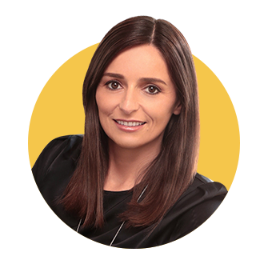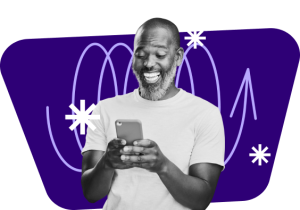Powering The Next Generation of Google Ad Experiences [Recap of Google Marketing Live 2022]

This post was authored by Shannon Mullery and Emily Sullivan, Content Specialists at Tinuiti.
After three years with only a virtual audience, Google Marketing Live 2022 #GML2022 brought brands and advertisers a global hybrid experience, with in-person viewing events taking place across the globe, and folks virtually tuning in for the livestream worldwide. From automation to privacy, Google Marketing Live 2022 had plenty of exciting new and evolving updates to share.
On Tuesday, we spoke with our internal experts at Tinuiti to find out what they deemed as the most valuable takeaway from the buzz-worthy event:
“Google is explicitly addressing feedback we’ve given in terms of visibility into the ‘black box’ of Google automation. The announcements we heard this year reflect a huge investment in tying ad performance more closely to business goals, as well as deeper explanations and insights into what the automation is acting upon. Some of the more exciting announcements mentioned today include new and evolving features that help to measure the broader effect of ads via Performance Max Insights + AB testing. The latest developments will ultimately help advertisers and brands better understand the halo effect that Google campaigns can have.”
– Aaron Levy, Head of Paid Search at Tinuiti

“In general, I am excited that Google continues to lean into commerce by making their properties and the SERP more Shoppable. The new ad formats on Search are undoubtedly more visual, interactive, and informative (bringing in product feed data, reviews, and more advanced filtering). They’re steadily connecting product feeds to all Google properties which should continue to drive growth in commerce for brands.”
– Evan Kirkpatrick, VP, Shoppable Media at Tinuiti

If you weren’t able to attend, we’ve got a full recap of the event below complete with trending topics, speakers, case examples, hot takes, and more!
Philipp Schindler, Senior Vice President and Chief Business Officer at Google, kicked things off via video, with all other presenters taking the stage to address a packed audience at Google’s Bay View Campus.

Schindler noted that while we are all navigating “real concerns about the overall macro-economic environment,” from supply chain issues to inflation, we have reason to be optimistic.
“I’ve heard a widely shared confidence that when we look back on this era, one thing it will be remembered for is how step-changes in everything remote, and the acceleration of digital transformation, led to so many lasting innovations in business and technology.”
Schindler next dove into some of the trends Google is seeing, with these “new, and now permanent consumer behaviors” creating needs that Google believes can only be met by tech innovations, including:
Recent and upcoming features explored include:
“Let me be clear; it’s not about virtual worlds. It’s about making the real world better today by bringing in the best of what the digital world has to offer to the real world. It’s about enhancing our reality to address actual needs via cutting-edge technology that makes our services multi-sensory and multi-modal. And the machine learning and automation tools that make it possible is the same technology that let us do what we’ve always done—put our coolest innovations in your hands, power the next generation of Google Ad experiences, and help you connect with consumers and grow your business.”
Next up was Jerry Dischler, VP/GM of Ads at Google, who shed some light on the value of connecting directly with marketers.
“We host Google Marketing Live to unveil new technology, and to share insights with leaders like all of you. We also look forward to this time of year to connect directly with you, so that you can offer feedback to our product teams,” Dischler says.
“These conversations are how we build the future of marketing together—one that’s safer for people, and works for businesses like all of yours. Moments like today help us further our mission to connect businesses with users, all while preserving an open Internet.”

Dischler noted that “people are demanding a new relationship with the digital economy,” wherein it’s essential to preserve the openness of the digital space while protecting user privacy.
He shared some of the ways that Google thinks about the future to answer 3 key “hot to” questions:
Recent and upcoming features, updates, and stats explored include:
Next, Vidhya Srinivasan, VP/GM, Ads on Google Properties, Buying & Measurement took the stage to focus on driving results today.

“Ads was actually one of the first teams at Google to implement machine learning into our products, and we remain the largest use-case here. Machine learning is just central to everything that we do.”
Recent and upcoming features, updates, and stats explored include:
Saurabh Sharma, Senior Director of Product Management at Google delivered an engaging session covering Google’s plans for privacy and measurement.

He shared how getting privacy right is an important part of Google’s mission and that it is possible to grow a business while still guarding user privacy along the way. He highlighted Google’s top privacy commitments:
“Regardless of the size or complexity of your business, you can respect user privacy while driving business growth,” Sharma says.
Sharma highlighted how Google’s goal is to keep users in control of both their data as well as their ad experience. He also covered new and improved launches like ‘My Ad Center’ which will allow users to control the ads they receive on Youtube, Search, and Discovery. Users can choose to see more or fewer ads with Google’s new mission control experience.
When it comes to helping businesses, Google also announced the expanded testing on interest-based ads and remarketing. Sharma covered how Google will reinvigorate tools already in action like marketing mix modeling so brands can know the impact of their media sooner.
Recent and upcoming features explored also include:
Available now:
Coming soon:
According to Sharma, “We as an industry need to believe and know that ads add value to the Internet and people’s lives…businesses and advertising need to provide safety for users because at the end of the day, this industry depends on user trust.”
The Internet has transformed every aspect of our lives and Bill Ready, President, Commerce, Payments & NBU at Google shared how that transformation has impacted and will continue to impact commerce on Google.

According to Ready, buyers are returning to stores, but at the same time, they enjoy omnichannel shopping experiences like having their purchases in-store, or nearby with just the click of a button.
He shared a few impressive stats:
In Ready’s session, he explained that even though shoppers are returning to shopping in-store, they did not decrease their digital usage and that it’s more critical for brands to have an online presence than ever before. Ready then presented the three core themes for Google Marketing Live which included: Reimagining What’s Possible, Results, and Resilience.
According to Ready, “Shoppers are seeking new and immersive ways to connect with the brands they love, to discover new ones, and to explore new products. This insight made it possible for us to ‘Window Shop’ on Google search last year, a first step towards letting shoppers have a more visual and engaging experience.”
Recent and upcoming features explored include:
Tina Weyand, Sr. Director, Product Management, Retail Ads at Google, started her session off with a common thought many marketers have today – keeping up with consumer behaviors and shopper demands can be difficult. Weyand challenged viewers to look at these demands not as a problem, but as an opportunity.

She shared that no two shoppers are alike and that many use an omnichannel approach when it comes to shopping. In fact, last holiday season, shoppers who used at least five channels to inform their decisions and complete their holiday shopping, reported making 2X more purchases and spending 2X as much compared to shoppers who only used one or two channels. So, it’s clear that now’s the time to embrace these consumers and their behaviors.
Weyand shared three major updates to help better reach these types of consumers:
Updates to Shopping Ads
To help brands meet changing consumer behaviors, Google is testing highly visual and immersive ad experiences in both organic results and through shopping ads. These ads can be swiped or tapped on to see even more product detail, reviews, and more.
YouTube Updates
In Google’s research with TalkShop, they found that in the US, 75% of people agree that YouTube provides unexpected inspiration. That’s why Google just announced that product feeds, previously only appearing in streams, will now appear in more places like YouTube Search and YouTube Shorts
Performance Max
“Consumer expectations around convenience, ease, and initiative shopping have never been higher. Plus our dependence on ecommerce and omnichannel experiences means that it’s not only about the idea of meeting shoppers where they are, the next level is seeing our physical and online stores as one,” Weyand says.
Performance Max allows marketers to buy Google ads across a variety of platforms including search, YouTube, Maps, and more. Weyand also announced that marketers can measure and optimize store visits and local actions. Users will be able to also bid and measure towards physical store sales, aligning with Google’s “one store” approach.
Straight out of the gate, Matt Madrigal, VP/GM, Merchant Shopping at Google, highlighted the need for more seamless checkout experiences within Google. He announced Google has created ‘Checkout on Merchant’. This checkout experience streamlines the consumer buying experience and here’s how it works…

Helping marketers build resilience for tomorrow is a major goal for Google, and Madrigal highlights how Google has made it a priority to build tools to help users keep a pulse on trends, identify opportunities, and get the most out of the platform.
Recent and upcoming features explored include:
Product improvements in Google Ads
Users can now access the products tab at the account level in Google Ads to easily spot inactive offers and to improve the quality of product feeds including identifying missing attributes, examining competitors’ offers, and more.
Loyalty programs
This new feature allows brands to showcase their loyalty benefits directly on Google to increase long-standing growth. Advertisers using Performance Max campaigns can also attract new loyalty members with ads.
“We’re experiencing an incredible moment in history. How brands and shoppers connect digitally and in-person is being radically transformed right before us. Intuitive shopping will continue as our everyday norm, and as it does our goal at Google will remain, to create the most delightful experience for shoppers all while helping businesses thrive,” Madrigal says.
“If we’ve learned anything from the past two years it is that being ready is not a feeling, it is a choice – because the most digitally mature marketers who were ready are reporting big gains.”
– Allan Thygesen – President, Americas & Global Partners, Google

Thygensen shared insights learned from the past two years and how digital leaders gained 5% market share in the pandemic vs. peers. He notes a few common trends among those brands including how they created agile and responsive marketing for the short and long term. He highlighted a beauty brand called The Ordinary and how in the midst of change, they thrived by:
Thygensen also noted that brands that succeed adopt a test-and-learn mindset. He highlighted an additional case study with Monday.com, a work operating system, and how they used a data-driven approach to optimize and test messages on platforms, specifically YouTube. He shared how they adapted their messaging to different audiences which drove a 25% increase in qualified sign-ups.
To close the session, Thygesen also sat down for a thought-provoking chat with Sarah Harden, CEO of Hello Sunshine, where they discussed:

Andraéa LaVant Founder & President of LaVant Consulting and KR Liu, Head of Brand Accessibility at Google, came together for a powerful conversation centered around inclusion and the impact of making marketing accessible to everyone. LaVant shared her experience working in the nonprofit sector where she discovered that people were afraid to address disability. Both Liu and LaVant highlighted the importance of inclusion and accessibility within marketing and why it’s so important:
“Accessible marketing matters because it allows all users, regardless of diagnosis, disability, or ability to fully engage and access brand’s content, their products, and their experiences. The fact is, disability impacts everyone. At some point, everyone is going to experience disability in one way or another – whether they have it or they know someone else who has a disability.”
– Andraéa LaVant Founder & President, LaVant Consulting

Liu highlights how many brands think of disability through a product-only lens and how they don’t consider the storytelling lens which is equally important. She shares how some brands don’t know how to approach this from a storytelling perspective and how to authentically represent people with disabilities in various ads and content.
LaVant shares how brands can start:
“There’s a phrase within our community that we use a lot – nothing about us, without us. It’s understanding that there is value with disabled people to be a part of these conversations. It’s about bringing in people with lived experiences with disabilities and not just giving them a seat at the table but making sure that they have the space to share and be decision-makers.”
Liu ended the session by sharing Google’s mission of accessibility within their technology including live captions within Google Meets. She wrapped up by sharing a real-world example of how Google is incorporating accessibility to better assist those with disabilities.
To learn more about how Tinuiti can help your brand leverage the latest in Google ad technology, contact us today.
